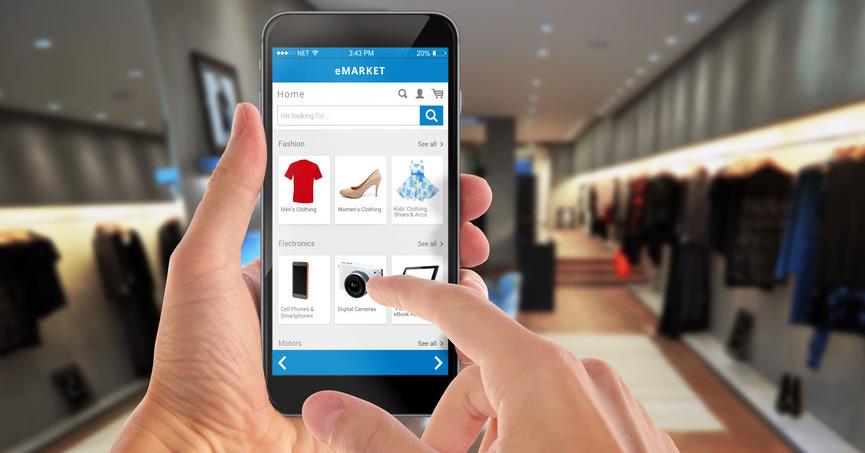Online apparel sales are on the rise more than ever. According to statistics, e-commerce revenues from apparel and accessories sales amounted 102.8 billion USD and should achieve 145.7 billion USD by 2023. Projections in the US also estimate that by 2030, 40% of the apparel and footwear market sales will happen online.
Apparel brands who decide to follow the online path have opportunities to grow exponentially, even in such a competitive market. Small and mid sizes business have to be creative to fight against major players like Macy’s and Amazon.
Success doesn’t come overnight, and apparel companies should work hard to stand out in the crowd, attract visitors and convince shoppers to buy.
One of the most common strategies in generating leads to your website to later convert them into buyers is through content marketing.
Examples of Content Marketing
- Blogs – Several fashion brands have their blogs, where they share articles regarding styling tips, outfit ideas, advice on caring for clothing and so on.
- Newsletters – These strong allies can remind your customer about abandoned shopping carts, or highlighting the latest trends.
- Social media – often the sole component of a brand’s content strategy. It gives you a chance to show off looks, styles and engage directly with the customers. Campaigns asking users to share their outfits and creations are usually a great approach.
- Videos – On YouTube or other platforms, videos can include runaway shows and general topics on clothing and style.
How to Succeed with Content Marketing
Fashion and content marketing have co-existed for a long time. Fashion printed magazines are proof of that. When the internet came, nothing was more natural than to start developing content to now so-called lifestyle blogs, online magazines, and social media. Although this might seem a blessing, brands need to put some extra effort to develop a strong strategy and leverage competitive content.
Check some of the following tips while preparing your strategy plan.
Your Brand’s Identity Should Be Concise
The mission, values and target audience of your brand will be the driving force behind your content marketing strategy. All your future efforts should be consistent with your company’s “soul” and focused on who your customers are. Don’t confuse your target audience with different messages and positioning. People will eventually lose interest when they notice a brand does not know what it stands for.
Know Your Target Audience
To engage with your potential customers, you need to know who they are. Demographics are essential, but it is not all. Identify what kind of content your audience generates and likes to consume, and where they do it. Understand their language, values, and interests. Also, check which influencers, fashion blogs and YouTube channels your audiences relate the most.
Create Buying Personas
If you run a T-shirt business for example, although everyone wears it, not everyone will specifically be interested in your brand or product. It is crucial to narrow your audience and profile your ideal customer based on what you are offering. Creating buying personas are one of the steps that will help you throughout your entire content strategy and will guide your decisions about where to engage, which content formats and message to use. A buyer persona is the representation of an ideal customer, which can be semi-fictional or based on customer’s interviews, surveys, and sales data.
Define Your Goals and Metrics
Content marketing can help you achieve several objectives, depending on what stage your brand is. Your plan might involve increasing your brand’s awareness, engagement, customer acquisition or support selling. Define your goals and metrics, and always check if your efforts are bringing the expected results.
Don’t Be Too Promotional
Focus on delivering quality content and in trying to connect with your customer. Remember that content is not the same as advertising or promotion.
Share Your Brand’s Story
Sharing details on how you built the company, and its success and failures build trust and makes your customer feel closer to you. Offer sneak peeks into your business, how the latest collection was created, manufacturing process and so on. These personal stories help to build your brand’s image to the customer and standing out.
Encourage Your Customers to Share Their Stories
When a customer shares his experience with a brand, it shows to peers what they also could achieve. You can use this authentic and cheap strategy encouraging your customers to share their looks and leave reviews on your website after purchase.
Have The Buyer’s Journey In Mind
The process before a customer decides to buy from you is “The Buyer’s Journey.” This process consists of four stages: awareness, consideration, decision, and customer. You should have this in mind before creating a piece of content. Utilizing the correct type of content on each buyer’s stage can influence your leads and convert them into customers.
Extra Tip – Work with Influencers
Influencers already have a social standing with your target audience, and they can advocate on behalf of your brand. Partnerships with influencers may vary, and it is expected an exchange of benefits in this process. Best results come when the influencer includes your product on their daily lives, organically and not too sales-pushy.
In Conclusion
E-commerce can be highly competitive, but with the right tools and strategies, your business can thrive. Marketing content can help you build your brand image and drive sales without the need for high investments in traditional media. Keep learning from your competitors, be always updated on new technologies and stay ahead in the curve.





